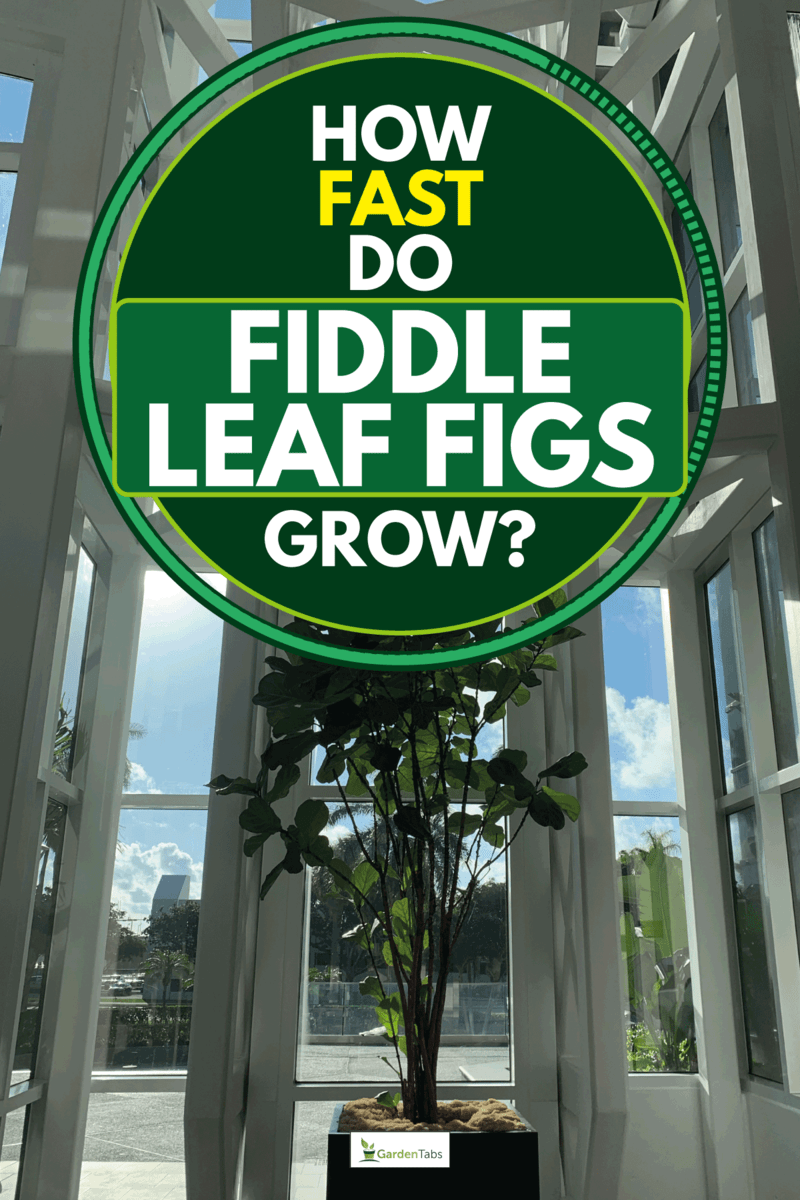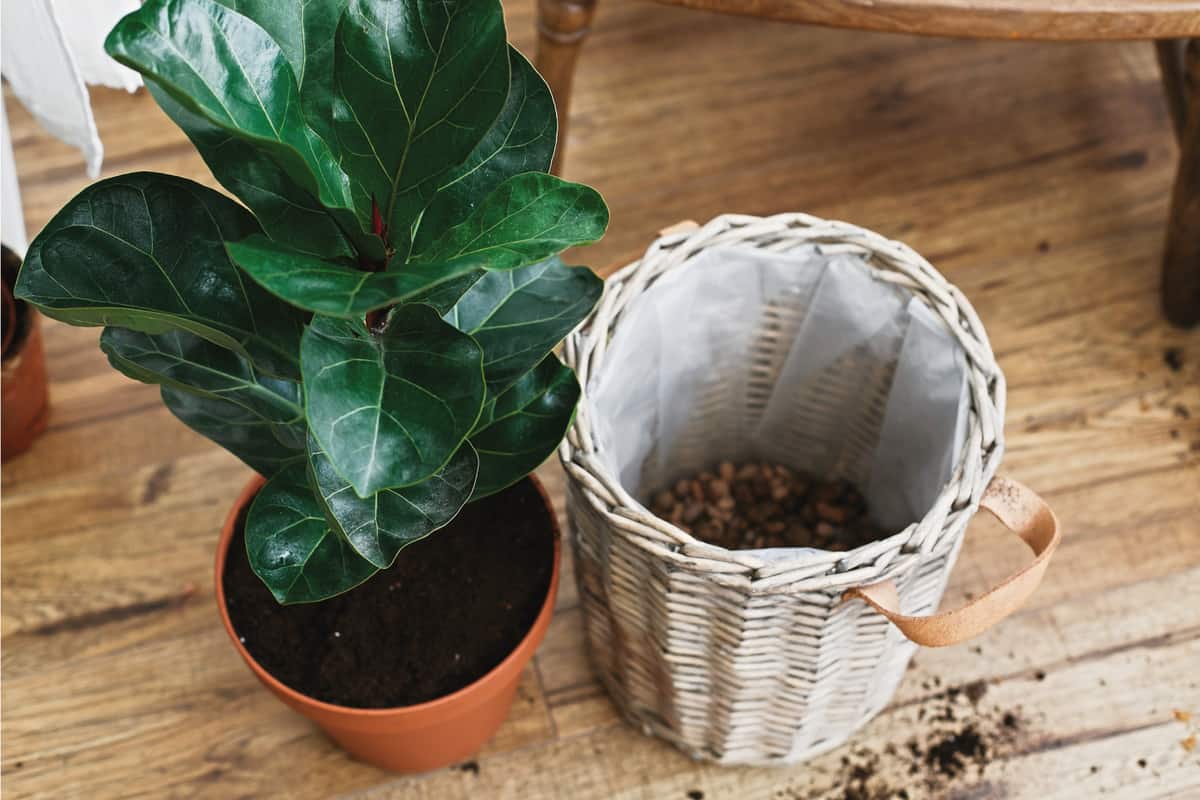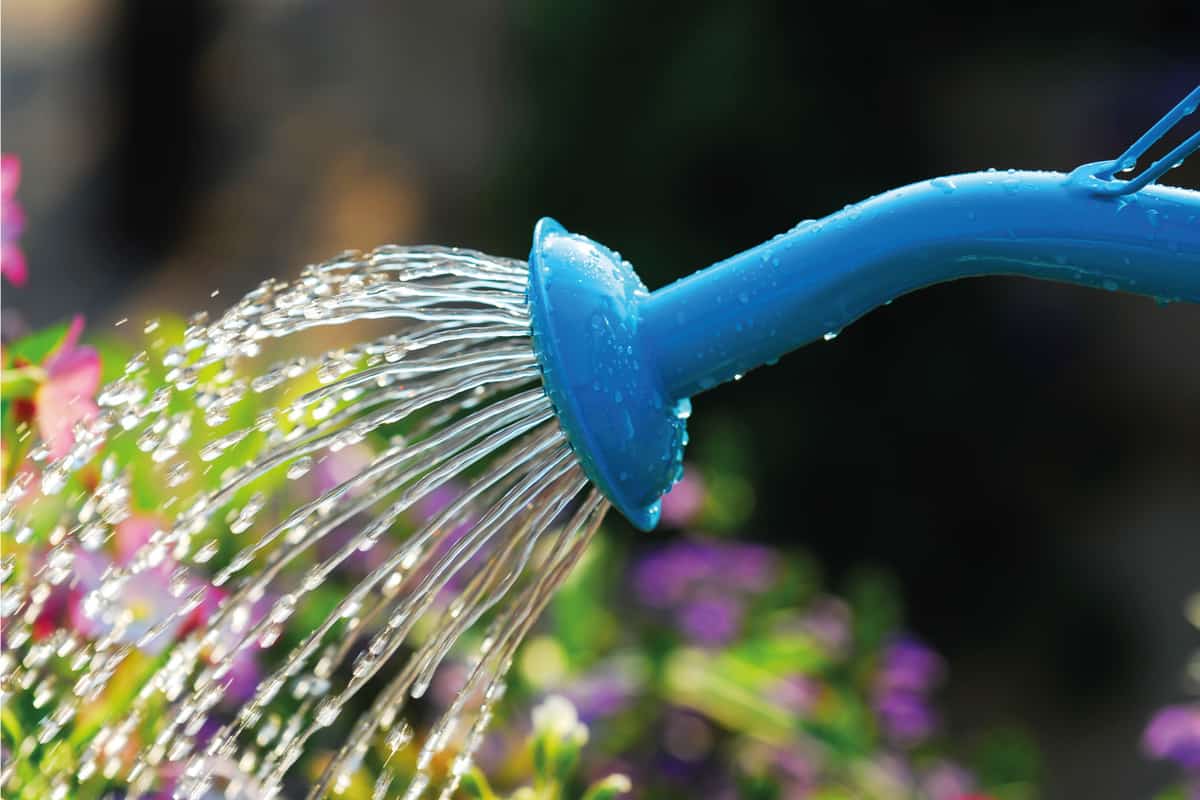Fiddle leaf figs make wonderful indoor plants that can last up to 15 years if properly maintained. If you have ever grown a fiddle leaf fig, you'll know that they can grow pretty tall even in indoor settings. But how fast do these plants actually grow? And how tall do they grow? In this post, we will answer these questions for you and discuss other topics surrounding their care and maintenance.
A properly maintained fiddle fig leaf plant can grow up to two feet each year. Overall they can reach up to six feet or more if allowed to grow freely. Encouraging a steady rate of growth typically includes the following factors:
- Provide Optimal Lighting
- Use The Right Soil
- Provide Annual Soil Treatments
- Give It Enough Water
- Use Fertilizer As Needed
Like any other household plant, fiddle leaf figs require maintenance and daily care for optimal growth. Continue reading to learn more about the factors that determine the growth rate and how to encourage it.

Provide Optimal Lighting

Lighting is one of the most important factors contributing to the steady growth of a fiddle fig leaf and its overall health. It's healthy for fiddle leaf figs to receive a sufficient amount of light bright every day, but it's best to avoid giving them harsh direct lighting over extended periods of time. If the direct sunlight is salt, such as in the early morning or late evening, it probably won't be as harmful (and is likely to cause leaf burn). It's also a good idea to rotate your plant to receive an even amount of lighting on all sides.
Use The Pot
When choosing a pod for your fiddle leaf fig, make sure to pick one that supports sufficient drainage and daily or weekly watering of the plant. The pot should have drain holes on the bottom to allow the water to easily drain out after it has been filled to the top. You can also consider tossing some pebbles or gravel on the bottom of the plant's pot to help prevent the soil from clogging up the holes.
Provide Annual Soil Treatments
Soil treatments are not the same as fertilizer; it means replacing the current soil that the plant is in. They are especially helpful if you do not fertilize the plant because all of the nutrients will eventually be used by the plant. When they're used up, they will need to be replenished. It's a good idea to change the soil for your fiddle fig leaf at least once a year, preferably right before summer. When you place the plant in new soil, do not remove all of the dirt from the soil ball, injuring the roots.
Give It Enough Water

When watering your plant, be sure to water all of the soil areas as opposed to just one section. Water is crucial to taking the nutrients from the soil to a plant's roots and up to the branches and leaves. Dry patches in the soil mean that there are areas of the roots that are not getting enough water, leading to ill-health of your plant.
You'll know if your fiddle leaf fig has enough water when the leaves are shiny and green, as opposed to dry and withering. If the leaves start to look like they are pruning, stick your finger in the soil about 1 inch deep to determine if it needs a watering session. If the soil feels dry and crumbly, pour water in until you see it coming out of the drain holes. Pour this excess water out, and then repeat this step.
Quick Tip: Don't allow your fiddle leaf fig to sit in a pool of water as this can cause root rot.
Use Fertilizer As Needed
If your tree reaches an unhealthy state, it may need a dose of fertilizer to help balance out the nutrients in the soil. Always be sure to read the recommended amount of fertilizer dosage before applying it to your plant. This will help you avoid overstressing the plant or causing a chemical burn. Fiddle leaf figs prefer a high-nitrogen supply and prefer fertilizers with an NPK (nitrogen, phosphorus, and potassium) ratio of 3-1-2. They may need more potassium later, however.
Ways To Encourage Fiddle Leaf Fig Growth
Pruning
Pruning a fiddle leaf fig is the best way to encourage its growth. It also has several other benefits, including the following:
Create Space
Your fiddle leaf fig can grow about two feet every year in ideal conditions, and its branches can span out about four feet. This can cause your home space to become crowded, especially if it's a small dwelling. By cutting some of the branches and leaves, not only will you help your plant to receive better airflow, but you will help to create more space for it to branch out.
Keeps Leaves Healthy
It's common for fiddle leaf figs to develop even a minor issue at some point, such as brown spots, the dropping of leaves, pest infestations, or common plant illnesses. If your plant becomes stressed, cutting off the affected leaves can help prevent them from infecting other leaves and parts of the plant.
Helps The Shape The Plant
If left unpruned, a fiddle leaf fig can become very bushy. If you prefer to keep your plant slimmer or shaped a particular way, pruning is needed to keep the leaves and branches in check.
Continue reading to learn how to prune your fiddle leaf fig.
Steps To Prune Your Fiddle Leaf Fig
Things you'll need:
Pruning shears
A damp cloth
Small tarp or plastic bag to cover the floor
Prepare the Area
Start by cleaning your pruning shears with rubbing alcohol or disinfectant, and then dry them with a paper towel. Next, place your plastic bag beneath the tree to cover the entire span of the branches. This is important, as the sap from fig trees can damage hardwood and tile floors (and stain carpet).
Prune the Branches
Inspect all of the branches on your tree and note the areas you plan to prune. Next, starting at the lower branches of the, find the spot between each node you want to cut and cut it at a 45-degree angle.
Dab Cuts with a Damp Cloth
Work your way to the top of the tree and be sure to dab each branch that you cut with your damp cloth to speed up the plant's healing process. You should notice new branches forming after anywhere from three to six weeks.
Notching
Notching is another commonly used method to help encourage growth on fiddle fig leaves. The difference between this and pruning is that it doesn't require you to cut off any leaves or branches. Continue reading to learn how to perform this method.
Steps To Notch Your Fiddle Leaf Fig
Things you'll need:
A sharp pair of clean shears
Damp cloth
Rubber gloves
A sharp gardening knife
1. Start at the bottom of your tree and locate the first node on the branch you want to notch. Take your knife and make a 1/8-inch diagonal cut into the tree's trunk, approximately one inch above the node. Continue to do this until you reach the last branch at the top of the tree.
2. Wipe up any sap that drips from the areas that you cut.
Pinching
The pinching method is similar to the pruning method, except for cutting the branches. Let's take a look at the steps to do this.
Steps To Pinch Your Fiddle Leaf Fig
Things you'll need:
Damp cloth
Rubber gloves
Knife
1. Starting at the top of your plant, find the area of the newest growth.
2. Next, take your gardening shears and cut the growth off at a 45-degree angle.
3. Wipe any leaking sap with your damp cloth. Then, pinch the branch that you cut with your index finger and thumb to close it off. The tree should start branching out in about 2 to 3 weeks. The best time to perform pinching is at the end of the spring or the beginning of the summer season.
A quick tip: Give your plant time to rest after pruning, notching, or pinching, as recovery will zap some of its energy. For example, don't move your plant to a new location, limit its sunlight, or transplant it shortly after performing any of these methods.
How big do fiddle leaf figs get?
When grown indoors, fiddle leaf figs can get up to six feet or more.
Do all fiddle leaf figs grow tall?
Not necessarily. Fiddle leaf figs will grow as tall as they are allowed to, depending on their pot size and overall health. If you properly maintain your plant and continue to increase the size of its pot as the roots grow longer, the tree will grow taller.
Should you stake a fiddle leaf fig?
There is nothing wrong with this taking your fiddle leaf fig plant, but it's not necessarily required for the plant to grow straight and tall. Occasionally, young fiddle leaf figs fail to stand on their own and may require additional assistance. In which case, you can plant stakes on either side of them to help them grow straight instead of crooked. It's also important to remember that the tree will grow in the sun's direction, so it may be helpful to rotate the plant throughout the week so that all sides get an equal amount of sunlight.
How big of a pot does a fiddle leaf fig need?
A fiddle leaf fig needs a pot that's a few inches bigger than its root bulb. If you want your plant to continue to grow, you can scale up the pots once or twice a year. Typical pot sizes or 4 to 7 inches can go up to 18 to 20 for larger plants.
How often should you repot a fiddle leaf fig?
If your fiddle leaf fig is healthy and thriving, you only need to repot it about every one to two years. However, if the plant becomes unhealthy for some reason, it may be necessary to repot it sooner.
How do you notch a fiddle leaf fig?
To notch your fiddle leaf fig, you'll need to take a sharp knife and make a small incision above each node on the plant's trunk. The cut should be about 1/8 inch long, no more than 1/3 deep into the stem. It's best to start at the bottom of the tree's trunk and work your way to the top.
What happens if you cut the top off a fiddle leaf fig?
If you cut the top off of a fiddle leaf fig, it will simply regrow as the plant attempts to restore balance to its shoot system.
Why is my fiddle leaf fig leggy?
When a fiddle leaf fig appears leggy, the chances are that it lacks sufficient sunlight. In this case, the best thing to do is to place it in a brighter location.
Wrapping Things Up
Fiddle leaf figs tend to grow about 2 feet every year when grown indoors. Depending on other factors such as maintenance, nutrition, and repotting, they can grow to over eight feet tall if you want them to.
Before you go, be sure to check out our other posts:





